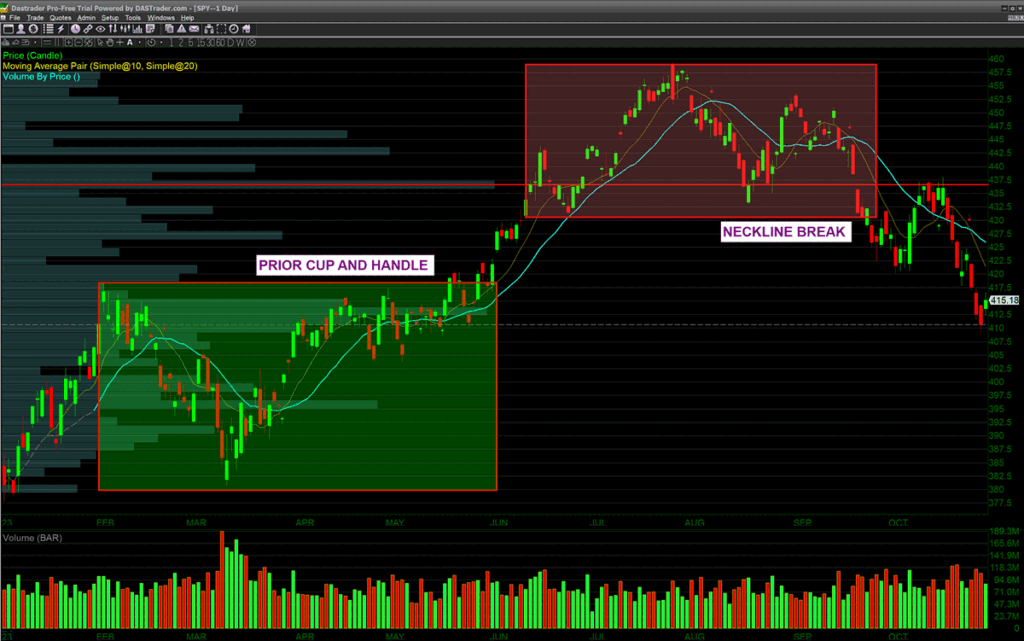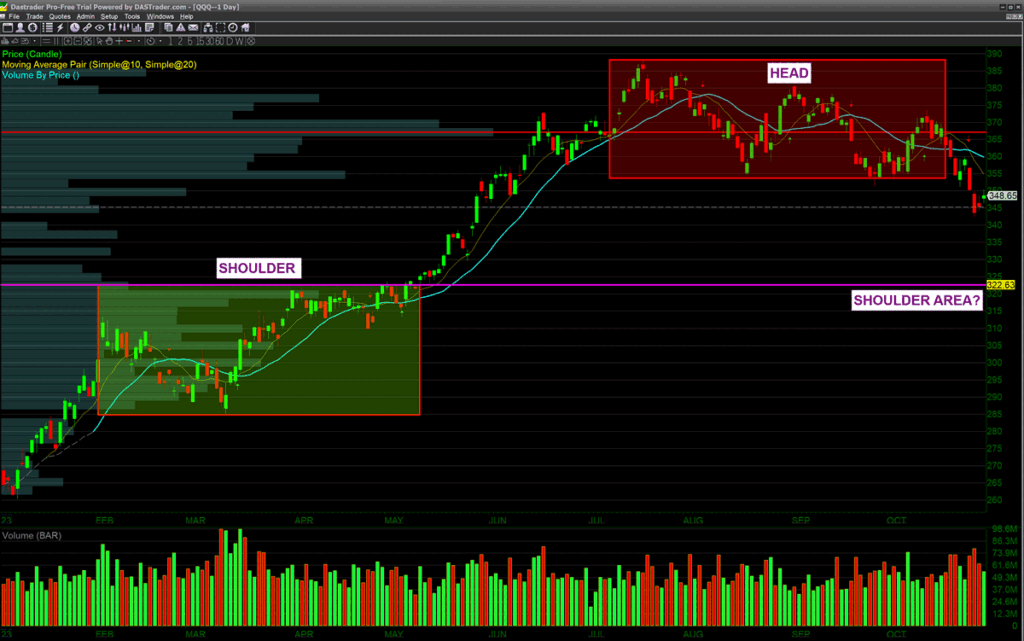As October comes to a close, US stock markets are now back in correction territory (meaning over 10% off their highs), and market volatility continues to be higher than normal. From a technical perspective, the stock markets have now established descending lower highs, and what looks to be a triple top.
On the $SPY, there was a head and shoulders reversal pattern forming, which subsequently had a neckline break. Now, we are bouncing off the support that was previously resistance from the earlier cup and handle formation, as seen in the image below.
The $QQQ, has a triple top formation, at the top of the head, and what could also be a much bigger head and shoulders reversal pattern forming which is not yet complete and is much more bearish for the markets overall (see image below). The $QQQ has been the leading index and it would be the index that guides us into bear market territory.
But neither of these formations are cut in stone yet so we will have to continue our analysis in the months to come.
From the perspective of the Wall of Worry, we now have the war in the Middle East added to the war in Ukraine, rising interest rates to fight, rising inflation, and a general slowdown of the world economy.
We are also two weeks into the earnings season and so far, most companies have met or beat expectations, but their stock prices have still gone down. This could potentially just be from market sentiment, or it could be indicative of future earnings. Expectations are expected to be revised downward.
As War rages in the Middle East, $USO which is the Oil ETF is forming what looks like a bull pennant (pictured above), which would indicate high oil prices are to come. However the softening world economy might reduce demand which could counteract this pattern which is still forming and has yet to trigger. All these factors combined indicate that we are to expect a period of higher market volatility, which is great for day trading and swing trading, but not conducive to long term investing.
Written by Michael DiGioia, Director of Education
Mike is available for One-on-One Coaching. Learn More








